Related Research Articles
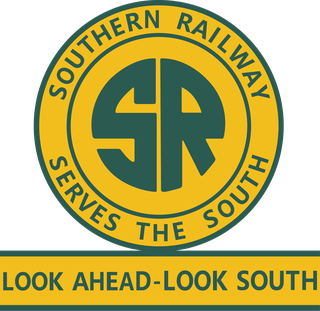
The Southern Railway is a name of a class 1 railroad that was based in the Southern United States. The railroad is the product of nearly 150 predecessor lines that were combined, reorganized and recombined beginning in the 1830s, formally becoming the Southern Railway in 1894.
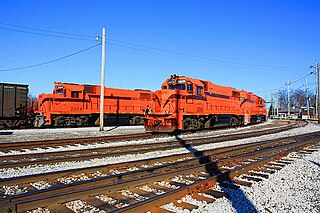
The Chicago South Shore and South Bend Railroad, also known as the South Shore Line, is a Class III freight railroad operating between Chicago, Illinois, and South Bend, Indiana. The railroad serves as a link between Class I railroads and local industries in northeast Illinois and northwest Indiana. It built the South Shore Line electric interurban and operated it until 1990, when it transferred it to the Northern Indiana Commuter Transportation District. The railroad is owned by the Anacostia Rail Holdings Company.
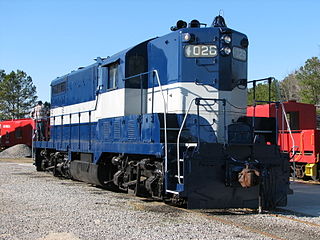
The Georgia Railroad and Banking Company also seen as "GARR", was a historic railroad and banking company that operated in the U.S. state of Georgia. In 1967 it reported 833 million revenue-ton-miles of freight and 3 million passenger-miles; at the end of the year it operated 331 miles (533 km) of road and 510 miles (820 km) of track.
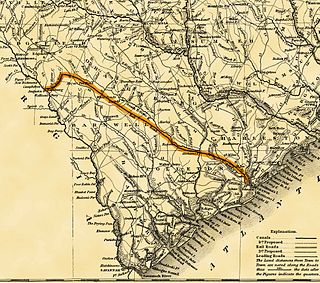
The South Carolina Canal and Rail Road Company was chartered under act of the South Carolina General Assembly of December 19, 1827. The company operated its first 6-mile (9.7 km) line west from Charleston, South Carolina in 1830. The railroad ran scheduled steam service over its 136-mile (219 km) line from Charleston, South Carolina, to Hamburg, South Carolina, beginning in 1833. Some sources referred to the railroad informally as the Charleston and Hamburg Railroad, a reference to its end points, but that was never its legal name. In 1839, The Louisville, Cincinnati and Charleston Railroad Company, which had built no track of its own, gained stock control of The South Carolina Canal and Rail Road Company, which continued to operate under that name. In 1844, The South Carolina Canal and Rail Road Company merged with The Louisville, Cincinnati and Charleston Railroad Company. The merged company changed its name to South Carolina Railroad Company under an act of the South Carolina legislature dated December 19, 1843.

South Carolina Rail Road Company was a railroad company, that operated in South Carolina from 1843 to 1894, when it was succeeded by the Southern Railway. It was formed in 1844 by the merger of the South Carolina Canal and Rail Road Company (SCC&RR) into The Louisville, Cincinnati and Charleston Railroad Company. It was built with a track gauge of 5 ft.
The Charleston and Savannah Railway was a 19th-century American railroad serving the coastal states of South Carolina and Georgia and running through part of the South Carolina Lowcountry. Its name varied slightly over time.

The East Tennessee, Virginia and Georgia Railroad (ETV&G) was a rail transport system that operated in the southeastern United States during the late 19th century. Created with the consolidation of the East Tennessee and Virginia Railroad and the East Tennessee and Georgia Railroad in 1869, the ETV&G played an important role in connecting East Tennessee and other isolated parts of Southern Appalachia with the rest of the country, and helped make Knoxville one of the region's major wholesaling centers. In 1894, the ETV&G merged with the Richmond and Danville Railroad to form the Southern Railway.

The Memphis and Charleston Railroad, completed in 1857, was the first railroad in the United States to link the Atlantic Ocean with the Mississippi River. Chartered in 1846, the 311 miles (501 km) 5 ft gauge railroad ran from Memphis, Tennessee to Stevenson, Alabama through the towns of Corinth, Mississippi and Huntsville, Alabama. The portion between Memphis and LaGrange, Tennessee was originally to be part of the LaGrange and Memphis Railroad, chartered in 1838. From Stevenson, the road was connected to Chattanooga, Tennessee via the Nashville and Chattanooga Railroad. In Alabama, the railroad followed the route of the Tuscumbia, Courtland and Decatur Railroad between Tuscumbia and Decatur, the first railroad to be built west of the Appalachian Mountains.
The Battle of Simmon's Bluff was a minor and bloodless Union victory, fought June 21, 1862, in Meggett, South Carolina, during the American Civil War.

The Carolina Piedmont Railroad is a class III railroad and subsidiary of Genesee & Wyoming Inc. operating in the Upstate region of South Carolina. From an interchange with CSX Transportation at Laurens the railroad runs 34 miles (55 km) to the northwest, terminating at East Greenville.
The Port Royal and Augusta Railway was a South Carolina railroad that existed in the latter half of the 19th century.
The Charleston, Cincinnati and Chicago Railroad, informally known as the Triple C, was a Southeastern railroad that operated in the late 19th century.
The Louisville, Cincinnati and Charleston Railroad was an antebellum railroad that served the State of South Carolina and Augusta, Georgia. It was a 5 ft gauge railroad line
The Southern Railway – Carolina Division was one of the first railroads chartered in the United States.
The Ohio River and Charleston Railway was a Southeastern railroad that operated in the late 19th century.
The North Charleston Terminal Company was a railroad company that provided switching facilities between the various industries of the manufacturing district and the connecting railroads at North Charleston, South Carolina.

Cammal is an unincorporated community in McHenry Township, Lycoming County, in the U.S. state of Pennsylvania. It lies along Pine Creek in the Pine Creek Gorge upstream of Waterville along Pennsylvania Route 414. Mill Run, which flows through the nearby Tiadaghton State Forest, enters Pine Creek at Cammal. The Pine Creek Rail Trail passes through Cammal.
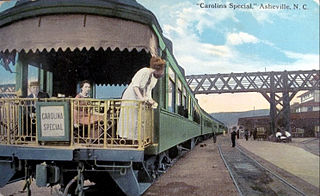
The Carolina Special was a passenger train operated by the Southern Railway between Cincinnati, Ohio and the Carolinas. It operated from 1911 to 1968. It was the last passenger train to use the route of the Charleston and Hamburg Railroad, which, as the South Carolina Canal and Railroad Company, began operation in December 1830, as one of the oldest railroads in the United States, and, by 1833, operated a 136-mile (219 km) line to Hamburg, South Carolina, on the Savannah River, the country's longest at that time. All Southern Railway Pullman service to Charleston rode over that historic, if bucolic, route from Branchville to the port city.
References
- ↑ "Enterprise Railroad, South Carolina Encyclopedia".
- ↑ Edgar, Walter. ""E" is for Enterprise Railroad". www.southcarolinapublicradio.org.
- ↑ "The Enterprise Railroad Company". The Best Friend of Charleston. January 30, 2016.
| This United States railway company-related article is a stub. You can help Wikipedia by expanding it. |